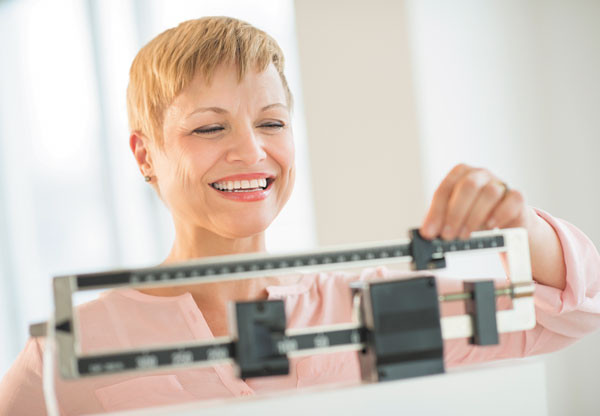
5 timeless habits for better health

What are the symptoms of prostate cancer?

Is your breakfast cereal healthy?

When pain signals an emergency: Symptoms you should never ignore

Does exercise give you energy?

Acupuncture for pain relief: How it works and what to expect

How to avoid jet lag: Tips for staying alert when you travel

Biofeedback therapy: How it works and how it can help relieve pain

Best vitamins and minerals for energy

Should you take probiotics with antibiotics?
Women's Health Archive
Articles
Let’s dance! How rhythmic motion can improve your health
Both music and exercise help prevent and alleviate disease. Fusing the two may have even greater benefits than either alone.
Image: iStock
Dancing is a universal human experience. We dance to express joy, celebrate life events, and enact religious and cultural rituals. Dance also has physical and cognitive benefits that may exceed those of other forms of exercise.
What dance does for your health
How to get started
If you've ever danced you know how much fun it can be. Even if your rumba is a little rusty or your back step has slowed, it may be easier than you think to get back in the swing. If you're not ready to jump on the dance floor at the next wedding or class reunion—maybe you're a little shy or feel you have two left feet—there still are ways you can enjoy dancing.
Take a class. Many Y's and senior centers offer some type of group instruction for people at all levels of expertise. You're most likely to find lessons in tai chi (a meditative exercise that is often performed to relaxing music) and Zumba (an aerobic workout that combines steps and moves from a variety of traditional dances, often to Latin music). Learning new types of ballroom dance can also be fun and challenging. If you don't have a partner, there is a world of folk and line dances that don't require a pairing with another person. Many dance studios and square-dance and contra-dance groups create a friendly environment for people by promoting partner rotation, where you switch partners and dance with someone new each time. You might also consider taking up (or resuming) tap, which can build bones, or ballet to strengthen core muscles and improve balance.
Dance at home. If you want to practice in private, the Internet has a wide variety of dance instruction videos, such as the popular "Dance for Dummies," that demonstrate the steps in slow motion and allow you to proceed at your own pace. Your public library may also stock instructional dance videos that are available to check out. All you need is comfortable clothing, a pair of supportive shoes, and enough space to move freely.
"In any instance you're getting the benefit of connecting to the music, so you're involving a part of the brain that isn't necessarily being tapped when you're doing something like walking that is more rote," Dr. Elson says.
Shopping for sunglasses
Wearing lenses that screen out harmful ultraviolet radiation is essential for keeping your eyes healthy.
Large wraparound lenses offer the best protection.
Image: Wavebreakmedia/Thinkstock
When you buy sunglasses, your primary aim might be to find a style that looks good on you and is comfortable. If so, like almost half of people selecting sunglasses from the racks, you've failed to consider the most important detail—the amount of harmful ultraviolet (UV) radiation the lenses screen out.
Concern about recurring hiccups
Hiccups are often caused by many everyday situations, including distention of the stomach (which can be the result of overeating), swallowing air, or drinking carbonated beverages. They usually go away on their own, but episodes that last longer than 48 hours could be a sign of certain medical problems.
Why isn’t my doctor seeing me for routine visits any more?
Ask the Doctor
Q. I've found lately that when I make a routine appointment with my doctor's office, I may be seen by a physician assistant or nurse practitioner instead of my doctor. I really don't have any complaints, but I'm wondering why they seem to be taking on things that my doctor used to handle. Is this a new trend?
A. In my practice, many patients see a nurse practitioner instead of me. The appointment might be for an initial visit to get established in the practice, for routine prenatal care, for an urgent issue such as a miscarriage, or for bothersome symptoms such as those from a persistent yeast infection. If a woman has complex medical issues, the nurse practitioner immediately consults me, and together we decide the best next steps.
Should my daughter have her labor induced?
Ask the doctors
Image: Thinglass/Thinkstock
Q. My daughter is 38 years old and pregnant with her first child. Her due date is in two weeks, and her doctor has recommended that she have labor induced a week early. Why can't she just allow nature to take its course?
A. Having a baby when you're "older" can have some advantages—women may feel more secure with them-selves, their relationships, or their careers. However, expectant moms 35 or older—and their babies—have some increased pregnancy-related risks.
7 things you can do to avoid drug interactions
Each of your medications may be affecting how the others work, leading to harmful side effects and complications.
Each additional medication you take increases the risk of drug interactions.
Image: SheilaFitzgerald/Thinkstock
Are you taking more than one drug? Are you taking a few different types of medications? Are you seeing several different doctors? If so, you may be at increased risk for drug interactions, which occur when a drug, a supplement, or even a food affects the way your body processes a medication. Such interactions can make a drug more powerful—so that a standard dose becomes an overdose—or can render it less potent or altogether ineffective.
How to handle a headache
Intermittent tension-type headaches may seem like a consequence of everyday life. Yet you can minimize and even prevent them.
Tension-type headaches can be annoying, but they can often be nipped in the bud by using nonprescription pain relievers.
Image: Digital vision/Thinkstock
Compared to migraines, tension-type headaches are a mere annoyance. They tend to be relatively mild and usually aren't accompanied by nausea or oversensitivity to light or sounds. Yet they can occasionally disrupt your day, making it difficult to concentrate on work or enjoy leisure pastimes.
Why controlling your weight lowers your risk of diabetes
Inflammation is an important link between obesity, elevated blood sugar, and type 2 diabetes.
Weight loss can reduce inflammation—a major contributor to diabetes.
Image: tetmc/Thinkstock
We've known for a long time that being overweight is a major risk factor for developing type 2 diabetes. But only in the last 20 years have researchers determined that metabolism and immune responses are linked and that chronic inflammation plays an important role in the development of obesity, diabetes, and related metabolic diseases. "Inflammation is not only associated with obesity, diabetes, and cardiovascular disease, but also precedes and predicts these conditions," says Dr. Allison Goldfine, head of the Clinical Research section at Harvard-affiliated Joslin Diabetes Center.
Mammograms identify heart disease risk
Research We’re Watching
Image: Frans Rombout/Thinkstock
When specks of calcium appear in ductal tissue on mammograms, they can indicate a small cancer. But when calcifications are found in the breast arteries, they haven't been a cause for concern. However, in recent years, physicians have begun to suspect that arterial calcifications in the breast, like calcifications in the coronary arteries of the heart, can be an early sign of cardiovascular disease.
A team of researchers at Mount Sinai St. Luke's Medical Center in New York City studied the test results of 292 women who'd had digital mammography and non-contrast CT chest scans within a year. None of the women were known to have heart disease. They found that 42.5% of the women had evidence of breast artery calcifications on mammography, and of these, 70% also had evidence of coronary artery calcification on their CT scans. Moreover, 63% of those whose CT images revealed coronary artery calcifications had breast artery calcifications as well. Over all, the results indicated that women with breast artery calcifications are three times as likely as those who don't to have coronary artery calcifications. The study was published online March 24, 2016, by JACC Clinical Imaging.

5 timeless habits for better health

What are the symptoms of prostate cancer?

Is your breakfast cereal healthy?

When pain signals an emergency: Symptoms you should never ignore

Does exercise give you energy?

Acupuncture for pain relief: How it works and what to expect

How to avoid jet lag: Tips for staying alert when you travel

Biofeedback therapy: How it works and how it can help relieve pain

Best vitamins and minerals for energy

Should you take probiotics with antibiotics?
Free Healthbeat Signup
Get the latest in health news delivered to your inbox!
Sign Up










